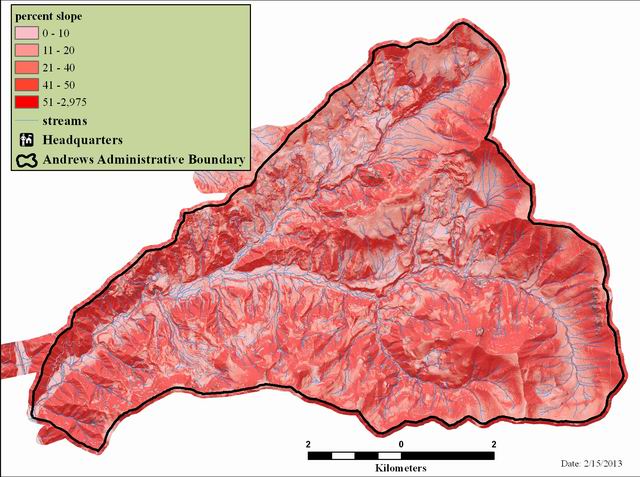Percent Slope grid generated from 1 meter LiDAR 2008 bare-earth DEM
Raster Dataset

Tags
topography, HJ Andrews
Experimental Forest, Landscape Ecology, Oregon, geology, Blue River Watershed, LiDAR,
digital elevation model (DEM), Willamette Basin
The base or bare-earth DEM values were used to calculate the percent slope of the study area. Values are in percent, with 100 percent = 45 degrees The final product is in ESRI GRID digital format, with a 1 meter cell size resolution. Each cell in the GRID has a value that represents the modeled percent slope at that location, in percentage. The purpose of the data is to provide users with a very accurate slope calculation for each grid cell. The data are suitable for creating visualizations, for models that require slope as an input, determining suitability for on the ground actiivites, and for descriptions of specific sites that require a slope value.
Watershed Sciences, Inc. (WS) collected Light Detection and Ranging (LiDAR) data from HJ Andrews and the Willamette National Forest (NF) on August 10th and 11th 2008. Total area for this AOI is 17,705 acres. The total area of delivered LiDAR including 100 m buffer is 19,493 acres. This raster contains an computer generated percent slope model of the LiDAR (the bare-earth Digital Elevation Model .
There are no credits for this item.
See access and use constraints information.
Extent
West -122.277460 East -122.099580 North 44.282961 South 44.196797
Maximum (zoomed in) 1:5,000 Minimum (zoomed out) 1:50,000